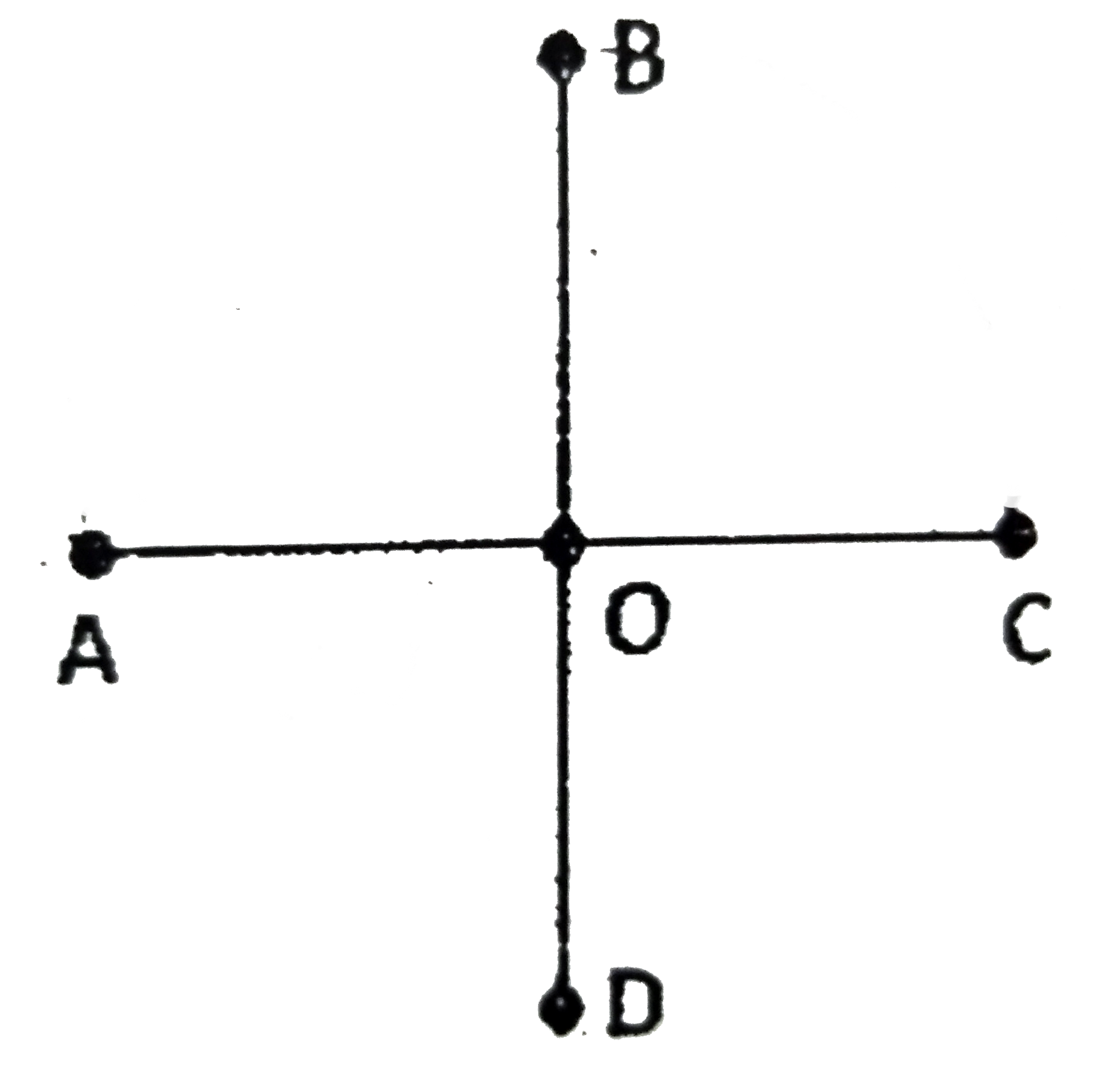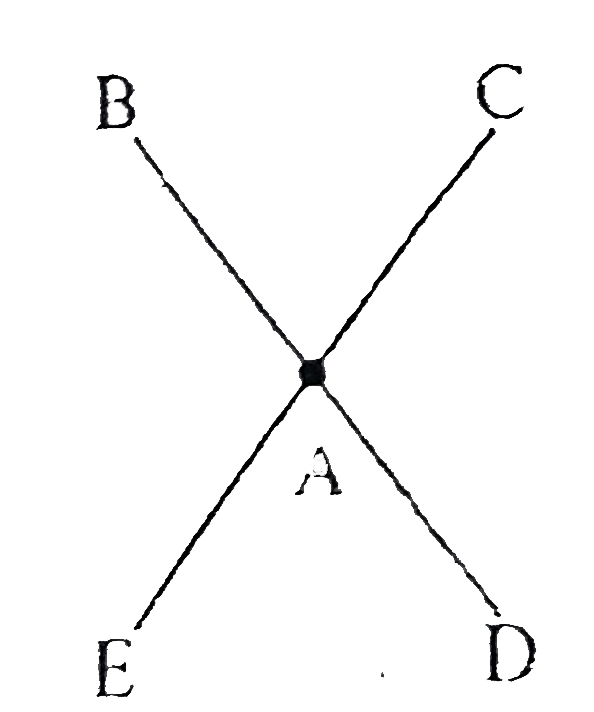Four identical rods which have thermally insulated lateral surface are joined at point O. Points A,B,C and D are connected to furnace maintained at constant tempertures. If the heat flows into the junction O from A at the rate of 2J/s and from B at 4J/s and flows out towards C is 8J/s. Chosse the correct relation.

TA<T0
T0<TC
TA=TD
(TB)=TD
Step by step video & image solution for Four identical rods which have thermally insulated lateral surface are joined at point O. Points A,B,C and D are connected to furnace maintained at constant tempertures. If the heat flows into the junction O from A at the rate of 2J/s and from B at 4J/s and flows out towards C is 8J/s. Chosse the correct relation. by Physics experts to help you in doubts & scoring excellent marks in Class 12 exams.
Topper's Solved these Questions
- BOOK - BANSALCHAPTER - TEST PAPERSEXERCISE - PHYSICS PART (A)32videos
TEST PAPERS
- BOOK - BANSALCHAPTER - TEST PAPERSEXERCISE - PHYSICS PART (B)3videos
TEST PAPERS
- BOOK - BANSALCHAPTER - TEST PAPERSEXERCISE - PHYSICS PART- C4videos
TEST PAPERS
- BOOK - BANSALCHAPTER - SEMICONDUCTORSEXERCISE - CBSE Question32videos
SEMICONDUCTORS
Similar Questions
Four metal rods each of length L and cross sectional area A are joined at point M. Thermal conductivities of MA, MB and MD are equal and that of MC is thrice that of MA. The end points A, B, C and D are kept in large reservoirs. Heat folws into the junction from B at a rate of P(Js−1) and C from at a rate of 3P. Heat flows out of D at a rate of 5P.
(a) Find the relation between temperatures of points A, B and C.
(b) Find temperature of D if temperature of A and M and TA and TM respectively.
 View Solution
View SolutionA and B are two points on a uniform metal ring whose centre is C. The angle ACB=θ,A and B are maintained at two different constant temperatures. When θ=180∘ i the rate of total heat flow from A to B is 1.2W. When θ=90∘, this rate (in watt) will be
View Solution
Knowledge Check
- Question 1 - Select One or More
Four identical rods which have thermally insulated lateral surfaces are joined at point A. Points B,C,D & E are connected to large reservoirs. If heat flows into the junction from point B at rate of 1W and from point C at 3 W inside, flows out from D at 5 w, which relation (s) is//are correct for temperature of these points?
 ATA<TEBTB=TCCTC>TDDTB=TE
ATA<TEBTB=TCCTC>TDDTB=TE - Question 2 - Select One
Three identical rods AB, CD and PQ are joined as shown. P and Q are mid point of AB and CD respectively. Ends A, B, C and D are maintained at 0∘C,100∘C,30∘C and 60∘C respectively. The direction of heat flow in PQ is
 Afrom P to QBfrom Q to PCheat does not flow in PQDdata is sufficient
Afrom P to QBfrom Q to PCheat does not flow in PQDdata is sufficient - Question 3 - Select One
A uniform metal ring with centre C have two points A and B such that angle ACB is θ. A and B are maintained at two different constant temperature.
If the angle between A and B i.e. θ=180∘ the rate of heat flow from A andB is 1.2W, then what will be the rate, when θ=90∘?A0.6WB0.9WC1.6WD1.8W
Three rods AB, BC and AC having thermal resistances of 10 units, 10 units and 20 units, respectively, are connected as shown in the figure. Ends A and C are maintained at constant temperatures of 100∘C and 0∘C, respectively. The rate at which the heat is crossing junction B is
 View Solution
View SolutionThe two ends of a metal rod are maintained at temperatures 100∘C and 110∘C . The rate of heat flow in the rod is found to be 4.0j/s. If the ends are maintaind at temperatures 200∘C and 210∘C, the rate of heat flow will be :
View SolutionThe two ends of a metal rod are maintained at temperature 100∘C and 110∘C. The rate of heat flow in the rod is found to be 4.0J/s. If the ends are maintained at temperature s 200∘C and 210∘C. The rate of heat flow will be
View SolutionThe two ends of a metal rod are maintained at temperatures 100∘C and 110∘C. The rate of heat flow in the rod is found to be 4.0 J/s. If the ends are now maintained at temperatures 200∘C and 210∘C, the rate of flow of heat will be
View SolutionThe two ends of a metal rod are maintained at temperatures 100∘C and 110∘C . The rate of heat flow in the rod is found to be 4.0j/s. If the ends are maintaind at temperatures 200∘C and 210∘C, the rate of heat flow will be :
View Solution

